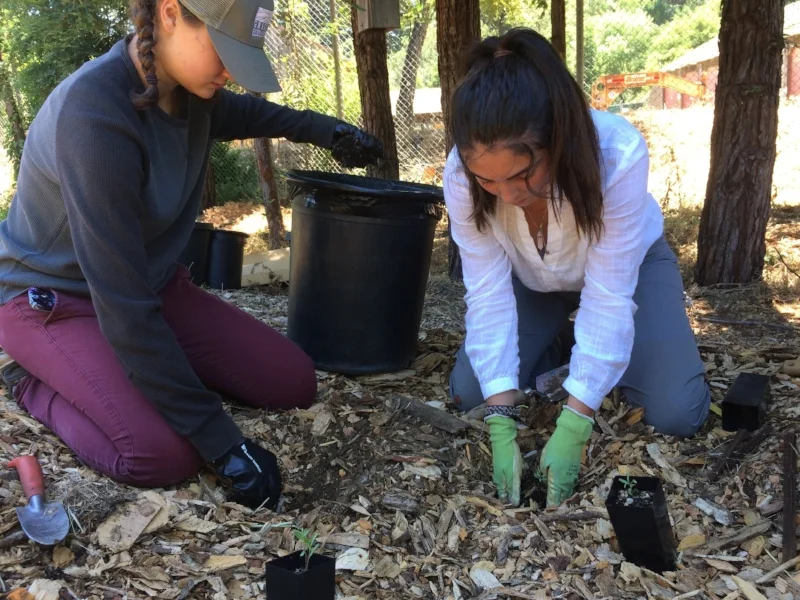Sense of Place
By Casey Mullins, Grassroots Ecology Summer College Intern
I was born and raised in Houston, Texas, a wonderful and diverse city but also a very urban setting. Growing up in Houston, the greatest connection I had to a relatively natural space was my backyard. I used to spend hours running around with my siblings playing “The Wilderness Game” where we had to fend for ourselves and survive in the “wild.”
At the time, I had no term for my ease in that space and the fondness I felt for it, but I cared for it all the same. When Hurricane Ike took several of our oak trees in 2008, I felt their loss and wanted to see my yard filled, once again, with the shady beauty those oaks provided.
Later, I would come to learn that there was a term for that close connection I had developed as a child, called “sense of place.” The term refers to the relationship between people and places and carries several different connotations depending on the context. Here, I use the term to describe the human feelings of attachment or belonging to a space.
I tend to think of it as directly related to the number of memories one has in a space, good or bad. Generally, the more experiences a person has with a place, the more comfortable they are likely to be in that place, and the more they will care about that place. I believe this is key to inspiring current and future generations to take care of our planet.
It doesn’t always take much to connect with a space. As my own experience illustrates, children are especially quick to develop attachments to the places they spend time. How many people remember a camp they went to or a park they played in as a kid? Sense of place, once established, is really hard to remove.
I moved out to the Bay Area two years ago to start school at Stanford University. This area is so different from the place where I grew up. Suddenly there were a variety of ecosystems and open spaces readily accessible to me.
This past year has given me two notable opportunities to connect myself to this land. The first was becoming a docent at Jasper Ridge Biological Preserve. Spending two terms getting to know the facts about the preserve well enough to be able to lead tours was one thing, but the true intimacy with the space came from the memories made with all the other docents-in-training.
A different, though equally profound, connection to my current environment was given to me this summer through Grassroots Ecology’s College Internship Program. This 10-week internship allowed me to experience what it’s like to work in environmental restoration.
Each week we had two workdays out in the field. We didn’t go to the same site every time, though, so by the end of the 10 weeks, we had visited 14 different sites. These ranged from riparian woodlands along San Francisquito Creek to open grasslands at Byrne Preserve to the dog-filled trails of Stulsaft Park. We got access to the remote Hendrys Creek site and even got to go camping at Foothills Park. We pulled yellow star-thistle just about everywhere—I think we claimed it as our internship mascot—and got well acquainted with icebreaker games of all sorts.
Interns hand pulling yellow star-thistle at Foothills Park.
I now have 14 new places where I can say things like, “Wow, that’s where we ran around with butterfly nets catching bugs,” or “Hey, that’s where we all got distracted by someone’s Corgi running up to be pet,” or even, “Cool, we pulled some yellow star there, and it hasn’t grown back!”
I have memories, some pleasant and some not so pleasant (sock-destroyer seeds are meant to stick to socks, not faces), embedded in each of those sites. Now if I hear one of them mentioned or visit one again, something in me will perk up in recognition. That’s the beauty of fostering sense of place.
Casey and other interns cleaning plant containers at the nursery.
If every one of the thousands of volunteers and students Grassroots Ecology reaches each year walks away with a connection to just one field site or species of bug, that makes a difference. This organization is helping expand the care and affection for the environment that those within the field already have. By sharing what they love about a certain plant or restoration activity, the staff are cultivating a child’s or a parent’s or a retired person’s sense of place.
Each Grassroots Ecology workday is about more than just managing volunteers to complete a task; it’s about connecting people to their natural spaces and laying the foundation of a life spent taking care of our beautiful planet.
Interns planting native species in the demonstration garden of Grassroots Ecology's nursery.




